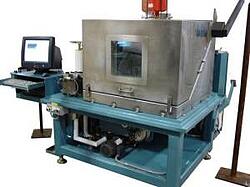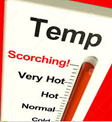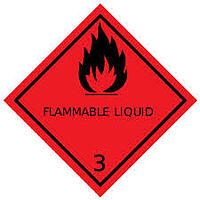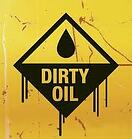This is the fourth in a series of articles outlining the system requirements and considerations when using specialty fluids for product test stands. This issue will address High Temperature Testing, and the fifth and final article will address Cold Temperature Testing.
 Figure 1- A WTI Temperature Test System
Figure 1- A WTI Temperature Test SystemTemperature Testing
One of the most stringent types of Servo Hydraulic Fluid Testing is high and low temperature testing. Some of our customers, and even many of our competitors, have fallen into the troublesome task of designing and building a test system to test at either high temperatures or at low temperatures. And even more difficult testing is temperature sweep testing from ambient to low, to high, and then back to ambient. These tests can be “one-off” to test a product’s reaction to a temperature or multiple sweep tests, and can continue for many hours or even weeks. Anyone who has applied this type of testing now clearly understands that simply raising or lowering the fluid temperature is not the solution to the testing, but the cause of the application problems.
High Temperature Testing
Testing at high temperatures can create many problems in the design and build of a test system. Some key areas for consideration are:
 Test Temperatures – Hot fluid testing generally ranges from ambient to 350°F (176°C) or higher. Fluid temperatures can be varied in a simple stepped test, with several increasing/decreasing temperature points, or, as in the more complicated sweeping temperature test, from low to high and back to low with very specific linear data points to achieve.
Test Temperatures – Hot fluid testing generally ranges from ambient to 350°F (176°C) or higher. Fluid temperatures can be varied in a simple stepped test, with several increasing/decreasing temperature points, or, as in the more complicated sweeping temperature test, from low to high and back to low with very specific linear data points to achieve.
Test Fluids – Test fluid can range from water, many variations of oil, transmission fluid, or any fluid that is associated with a part’s operation.
Vapor or Fumes – Many fluids will expel vapors when exposed to high test temperatures. Provision must be made to safety capture and treat these fumes before they can enter into the atmosphere.
Flash Points – Most hot fluid testing will be conducted within the rated operational temperature of the component. More and more test requests are now requiring higher temperatures to test to the extreme operating parameters of the component. When testing temperatures near the fluid flash point, many special preventative measures and precautions must be incorporated into the design.
 Redundant Safeties – Secondary safeties are a must in all high temperature testing. Temperature control runaways, however improbable, must be guarded against to prevent fluid flash or system explosion.
Redundant Safeties – Secondary safeties are a must in all high temperature testing. Temperature control runaways, however improbable, must be guarded against to prevent fluid flash or system explosion.
Potential of Injury to Personnel – Additional guarding, interlocked guard doors, and redundant safeties are a must when developing a hot oil test system. The protection against burns, vapor inhalation, and explosion all must be considered when developing a system.
Component Selection – Plan and simple, components do not react the same when operating on ambient temperature fluid as they do at three times the temperature. Component selection must include consideration of the type of seals and materials, rated component flows and leakages, and component life/warranties.
Other Requirements
Other designed and operational requirements which must be taken into consideration include:
Mass loads of fixtures and parts – Getting hot is only one portion of the test. Cooling of fluid and components must also be reviewed during the design phase of the project. The mass associated with the fixtures, chamber, the fluid, and the part itself must be considered when sizing the cooling equipment to meet the required cycle time.
Maintenance of the fluid – The fluid’s condition must be constantly monitors for chemical breakdown due to the high test temperatures. In addition, regular spectral analysis of the fluid can provide important indications of possible pending test component failures.
Heat Transfer – One seldom-considered effect of high temperature systems is the transfer of heat into the surrounding atmosphere. Designing a system to retain its own heat can greatly reduce test lab air conditioning costs.
Genuen (formerly Wineman Technology) has proven experience with all types of temperature testing to suit all of your applications. To avoid the pitfalls of hot fluid testing, rely on us for all of your temperature test system’s needs. For more information on please contact Genuen today.
Read the next blog in this series here.


